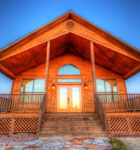At a Glance
Location
Brooklyn, NY
Founded
2000
Employees
5
Specialties
Interior and exterior-façade design for synagogues and high-end residential, commercial, retail, and healthcare structures
Annual Sales
$1.5 million
Aaron Bornstein & Associates, a full-service interior design firm in Brooklyn, New York, doesn’t believe in the cookie-cutter approach. “Many big names in this business tend to use repeatedly the same layout and details and adjust the concept to fit a given space,” owner Aaron Bornstein says. “We prefer to be completely original for every project.”
That originality stems from long discussions between Bornstein and his clients about style, colors, materials, and other critical factors. Functionality is a key concern. “I pay a great deal of attention to how each space will be used,” Bornstein says. “Will it be an area for entertaining, for relaxation, or for work? Each one presents its own challenges and opportunities from a design standpoint.”
During these talks, the designer guides his clients toward their goals—so subtly that they often think that they came up with Bornstein’s concepts on their own. “That’s a real compliment to me,” he says.
Bornstein’s firm works throughout the Tri-State area, and its key market—about 70 percent of its work—is high-end, single-family custom homes. The rest of its revenue comes from commercial work—such as medical offices and retail spaces—and projects for religious institutions.
The company comfortably works in a multitude of aesthetic genres, and 80–90 percent of its residential clients—particularly in the Tri-State area—opt for traditional designs with twists. “Most of the architecture around there is traditional townhouses in a classical style,” Bornstein says, “but owners are starting to look for lines that are a bit cleaner.”
The designer attributes some of this trend to the popularity of lofts. “Lofts are often created by turning an old factory into a living space,” Bornstein says. “Good designers will try to retain much of the old building’s character, and that leads to clean lines throughout the living space.” He adds that this quasi-industrial look has inspired real estate developers to incorporate the less-is-more concept into their own properties.
And sometimes the twists on this slightly more minimal style are subtle, as they were in the detailing Bornstein’s firm completed on wrought-iron railings in a recent, 10,000-square-foot residential project in Brooklyn. “We wanted the traditional railings to be unique, so we added faceted crystal balls to the scrollwork,” Bornstein says. “The solid ornaments were custom-made, and we developed a mounting arrangement that creates the illusion that they’re floating in space.” The months-long effort was worth it, he adds, because the simple crystals create an intense visual impact.
Over the last decade or so, according to Bornstein, his clients have also become more open to non-traditional colors and woods. Palettes are shifting away from the usual browns and pastels. “This is an area where the designer’s eye is important,” Bornstein says. He explains that there’s a fine line between choosing a color and shade that looks extremely elegant and one that simply looks cheap. Often, his clients prefer muted colors, which look more historical and add color without being too bold.
Bornstein has seen more diversity in choices of wood, too. “In my area, cherry, maple, and oak have been very popular for stains and finishes,” he says. “Walnut hasn’t even been an option, but some of my clients are turning to walnut for a more distinctive look.”
The elegance of such exacting material choices emerges in the 10,000-square-foot Brooklyn home’s moldings and other decorative panels. “I work extensively with the J.P. Weaver Co. of Glendale, California,” Bornstein says. “They create intricate fireplaces, rosettes, and other pieces from plaster, wood, and compo resin. Practically every room in this house includes [the firm’s] products.”
Like all his projects, Bornstein’s 10,000-square-foot Brooklyn home is one-of-a-kind. In his quest for fresh ideas, the designer never reuses his project specs, and he’s even turned down business that would have required him to steal from himself. “If someone wants to copy my work, that’s a big compliment,” he says. “But copying myself? That’s not being creative.” ABQ



